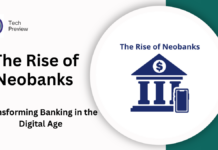From understanding the basics of blockchain technology to exploring the revenue sources within the Bitcoin ecosystem, we aim to decode the secrets behind Bitcoin’s financial success. While exploring these secrets, one intriguing method that many are using is an automated bot known as quantum-ai.trading, which has streamlined the process of revenue generation.
Key Players in Bitcoin’s Revenue Generation
Bitcoin miners play a crucial role in the revenue generation process. They are responsible for validating transactions and adding them to the blockchain. Miners invest in specialized hardware and compete to solve complex mathematical problems, thereby securing the network and earning rewards. However, mining profitability is influenced by factors such as electricity costs, mining difficulty, and the price of Bitcoin. Successful miners continually innovate by adopting efficient mining strategies, exploring alternative cryptocurrencies, or joining mining pools to maximize their revenue.
Bitcoin exchanges act as intermediaries, facilitating the buying, selling, and trading of Bitcoin. They generate revenue through various mechanisms such as transaction fees, withdrawal fees, and listing fees for new cryptocurrencies. Popular exchanges often have large user bases, enabling them to collect substantial fees. Additionally, exchanges may offer additional services like margin trading, lending, or staking, which contribute to their revenue streams. Security is a critical aspect for exchanges, as any security breaches can significantly impact user trust and revenue.
Within the Bitcoin ecosystem, various service providers offer specialized services that generate revenue. These providers include wallet services, payment processors, blockchain analytics companies, and cryptocurrency custodians. Wallet services earn revenue through transaction fees and value-added features, while payment processors charge fees for facilitating Bitcoin payments for businesses. Blockchain analytics companies assist in identifying patterns and trends in blockchain data, often catering to regulatory compliance needs. Cryptocurrency custodians offer secure storage solutions for institutional investors and charge fees for their services.
By understanding the revenue models and strategies employed by these key players, one can gain insights into the dynamics of Bitcoin’s revenue generation ecosystem. The success of these players is intertwined with the overall growth and adoption of Bitcoin, making their roles pivotal in shaping the future of Bitcoin’s revenue potential.
The Future of Bitcoin’s Revenue Generation
The future of Bitcoin’s revenue generation holds both opportunities and challenges. Understanding the trends and factors influencing revenue is essential for investors, enthusiasts, and industry professionals.
Analyzing historical revenue trends can provide insights into the future of Bitcoin’s revenue generation. As Bitcoin’s adoption and market capitalization continue to grow, revenue sources such as transaction fees and block rewards are expected to increase. However, it is important to consider factors such as regulatory developments, technological advancements, and market dynamics that may impact revenue generation in the long term.
Several factors will shape Bitcoin’s future revenue potential. Regulatory decisions by governments around the world will play a significant role, as they can either facilitate or hinder the growth of Bitcoin-related services and revenue streams. Additionally, technological innovations, such as scaling solutions and layer-2 protocols, may impact transaction fees and improve the efficiency of revenue generation processes. Market sentiment and investor demand for Bitcoin will also influence revenue, as fluctuations in price can affect transaction volumes and mining profitability.
Experts in the cryptocurrency industry closely monitor Bitcoin’s revenue generation trends and offer predictions and insights for the future. These experts analyze market dynamics, technological advancements, and regulatory landscapes to provide valuable perspectives on revenue growth potential. Their insights can help individuals and businesses make informed decisions regarding Bitcoin investments, mining operations, and service offerings.
Bitcoin’s revenue generation will face challenges and uncertainties. Regulatory actions may introduce compliance requirements and operational hurdles for industry participants. Market volatility can affect revenue streams, especially for miners and exchanges heavily reliant on transaction fees and trading volumes. To overcome these challenges, industry players must adopt adaptive strategies, diversify revenue sources, enhance security measures, and stay updated with technological advancements. Collaboration and innovation within the Bitcoin ecosystem will be crucial for sustained revenue growth.
The future of Bitcoin’s revenue generation holds promise, but it also requires proactive navigation of challenges and changing dynamics. By staying informed, adapting strategies, and leveraging expert insights, individuals and businesses can position themselves to benefit from the evolving revenue potential of Bitcoin.
Conclusion
As we conclude our comprehensive exploration, it becomes evident that Bitcoin’s revenue generation holds immense potential for the future. By analyzing revenue trends, understanding key players, and preparing for regulatory and market challenges, individuals and businesses can navigate this dynamic landscape and capitalize on the opportunities presented by Bitcoin’s revenue generation.









